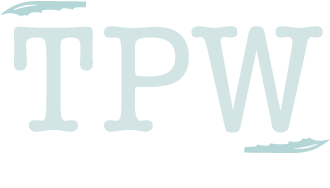Slavery is defined as the ownership of humans. It is portrayed in both the Tortallan and Circle Universes by Tamora Pierce.
Tortallan Universe[]
Slavery is quite widespread throughout the Tortallan Universe and is featured as a major social issue in several books.
Tortall[]
The kingdom of Tortall was a slaveholding country up until 249 HE, upon a decree by King Roger III in response to the kidnapping and near enslavement of Gareth of Conté, his only son.
Slavery was already a problem for the Provost's Guard around 246 HE before it was forbidden, as illegal slave auctions were a common way to dodge taxes. Furthermore the kidnapping of children for selling them as slaves was already prohibited.[1] In the Lower City of Corus the Market of Sorrows was a known place for slave trade, so named because poor families would sell their own children there.[2]
Slavery was abolished gradually, beginning in 249 HE: Slave traders were required to leave the country by October 1 249, and the buying and selling of slaves was made mostly illegal at that time. Children under ten could not be owned after spring 250 HE.[3] There would still have been slaves in Tortall for a few more decades at least, until the youngest existing slaves all either bought their freedom or died.
Even with this gradual transition, the abolition of slavery led to frequent civil wars from 251 to 280 HE.[4]
Carthak[]
Slaves in Carthak have no rights and there are very few Carthaki laws that protect them from brutality.[5] The whipping and killing of slaves is legal if a free person feels threatened in any way. Carthak used slavery as a way to subjugate new conquered lands and often transported conquered peoples to become slaves in other parts of the Southern Lands. The gladiator arena was popular in the 430s HE.[6] Slave catching was sanctioned by the government in the early part of the 450s, and was allowed by Ozorne Tasikhe in order to terrorize Tortall.
In 451 HE, Veralidaine Sarrasri petitioned Ozorne's successor, Kaddar Iliniat, to think of the slaves and to free them or help them. Kaddar said he would but that just freeing the slaves would be tricky as many people would rebel against him in fear of slave uprisings.[7]
Copper Isles[]
The indigenous people of the Copper Isles were enslaved in order to subjugate them upon the successful Luarin Conquest. The Isles have no protections for slaves under luarin law, especially for raka slaves. Luarin slaves are treated somewhat better, but all slaves are subjected to harsh restrictions (such as being forbidden from carrying weapons on pain of death). Magical slave collars prevent slaves from travelling too far from their masters.
Brutal jurisdiction kept even free raka subjugated under threat of slavery, such as the hateful and brutal Conqueror's Laws. Before the Luarin Conquest, the raka did practice slavery, and often enslaved beaten members of warring clans.[8]
Circle Universe[]
There are fewer slaveholding countries portrayed in the Circle Universe. There are a few countries where commoners could be considered as some kind of slave—or a serf—due to their lack of rights and autonomy in law, such as Namorn.
Yanjing[]
Evumeimei Dingzai was sold to slavers by her mother, who was disappointed that she wasn't a boy.
Chammur[]
Evvy was brought to Chammur and sold. The penalty for a runaway slave was quite harsh.[9] Anyone who found a runaway slave could bring them to Justice Rock for a reward. It is not likely that there are many laws in place for the protection of slaves from the wrath of their owners.
Sotat[]
As Chammur is a part of Sotat, it is likely that the kingdom itself is a slaveholding nation itself. If there is no slave trade, however, the prison complex and sentences could be considered slavery, as criminals have no rights once they are sentenced to physical labor for life. This slavery is inflicted on even very young minor criminals, like Briar Moss and a few others of his gang.[10]
Notes and references[]
- ↑ Terrier, April 2, 246 (pg. 79)
- ↑ Terrier, April 2, 246 (pg. 92)
- ↑ Mastiff, final chapter (pg. 571—573; Random House hardcover)
- ↑ Tortall: A Spy's Guide, pg. 225-235
- ↑ The first truly brutal depiction of slavery in the Tortallan Universe was in the third book of The Immortals quartet, when Carthak was first showcased
- ↑ Tempests and Slaughter, Ch. 1
- ↑ Emperor Mage
- ↑ Trickster's Queen
- ↑ Street Magic
- ↑ Sandry's Book, early chapters
